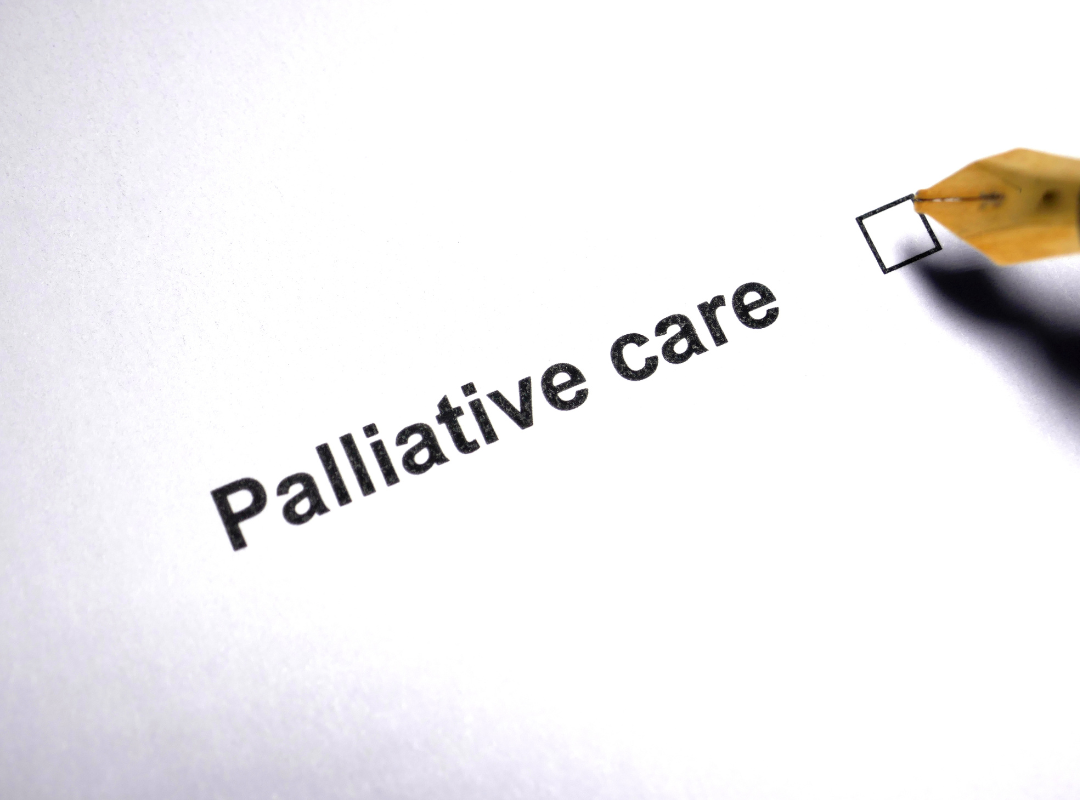When you or a loved one is facing a serious or terminal illness, navigating care options can be overwhelming. Two of the most common approaches—palliative care and hospice care—are often misunderstood. Many families find themselves asking: What’s the difference between palliative care and hospice? Which option provides the best support?
This guide explains the key differences, eligibility requirements, and benefits of both care types. Whether you’re seeking relief during ongoing treatments or comfort in life’s final stages, understanding your choices ensures peace of mind and compassionate care. We’ll also explore who pays for palliative care, address concerns like why palliative care is bad (a common misconception), and review the 5 stages of palliative care to help families feel confident and informed.
What Is Palliative Care?
Palliative care is a specialized medical approach for individuals facing serious illnesses such as cancer, heart failure, and dementia. Unlike hospice care, palliative services are not limited to end-of-life situations. Patients can receive palliative care alongside curative treatments, with the goal of improving comfort, reducing symptoms, and providing emotional and spiritual support.
At Shadowleaf at Estrella Gardens, we understand the importance of whole-person care. Palliative care includes a team of doctors, nurses, social workers, and chaplains who collaborate to create a plan that aligns with the patient’s goals and values.
It’s also important to know that senior respite care can complement palliative services, giving caregivers time to rest while their loved one receives professional support.
Common Concerns: Why Do Some Say Palliative Care Is Bad?
There’s a growing discussion around why palliative care is bad—but this belief usually stems from myths or misunderstandings. Some families fear that accepting palliative care means giving up hope. However, this couldn’t be further from the truth.
In reality, palliative care focuses on improving quality of life during treatments. It doesn’t replace curative care but enhances it. Studies show that patients receiving palliative care often experience less depression, improved symptoms, and better communication with providers. The key is understanding that palliative care empowers patients—not limits them.
5 Stages of Palliative Care: What to Expect
Knowing the 5 stages of palliative care can help families better prepare and navigate care transitions:
- Early Planning – Discuss care preferences after diagnosis.
- Assessment – Develop a treatment plan with the care team.
- Symptom Management – Address physical and emotional discomfort.
- Advanced Care Planning – Prepare for future medical decisions.
- End-of-Life Support – Transition to hospice if needed.
These stages reflect a continuum of care that evolves with the patient’s needs, always focused on dignity and comfort.
Why Do Doctors Recommend Palliative Care?
Many families ask, Why do doctors recommend palliative care? Physicians suggest it when they believe symptom management and emotional support can enhance a patient’s experience, especially when living with a chronic or life-limiting condition.
Palliative care helps reduce hospital visits, manage side effects from treatment, and guide complex decisions. By addressing physical, emotional, and spiritual pain, doctors aim to empower families and reduce unnecessary suffering.
For more on this, the Cleveland Clinic offers an excellent overview of how palliative care works with your medical team.

Who Pays for Palliative Care?
Understanding who pays for palliative care is crucial for many families. In most cases, palliative care is covered by Medicare, Medicaid, and many private insurance plans. The extent of coverage depends on the care setting (hospital, home, outpatient), but support is widely accessible.
At Shadowleaf at Estrella Gardens, we work with families to help them navigate insurance, benefits, and any out-of-pocket costs, ensuring that financial concerns never block access to quality care.
Where Is Palliative Care Provided?
Palliative care can be accessed in several settings:
| Setting | Description |
| Hospitals | For immediate, specialized care |
| Nursing Homes | Long-term, 24-hour assistance |
| Outpatient Clinics | Scheduled visits during ongoing treatments |
| At Home | Personalized support in familiar surroundings |
Additionally, many communities offer skilled nursing care integrated with palliative services to support daily living activities.
Understanding Hospice Care
Unlike palliative care, hospice is intended for patients who are in the final phase of a terminal illness—typically with a prognosis of six months or less and when curative treatments are no longer effective or desired.
Hospice focuses on comfort care, allowing patients to experience the highest possible quality of life in their remaining time. Retirement living care programs often integrate hospice services for a seamless transition.
Goals of Hospice Care
| Focus | Goal |
| Comfort and Dignity | Reduce pain and discomfort |
| Emotional Support | Provide counseling for families |
| Holistic Care | Address spiritual and psychological needs |
| Family Involvement | Encourage shared decision-making |
These goals foster a supportive, peaceful environment during one of life’s most difficult transitions.
Hospice Eligibility and Enrollment
To be eligible, a physician must certify that the patient has six months or less to live. Starting hospice early allows families to maximize support, rather than waiting until symptoms become overwhelming.
Hospice also works hand-in-hand with dementia care services, ensuring those with memory loss receive the compassion and supervision they deserve.
Benefits of Hospice Care
The benefits of hospice care extend far beyond medical treatment. Families gain access to:
- 24/7 support
- Grief counseling
- Reduced hospitalizations
- More meaningful moments together
This type of care is focused on living fully—not just managing symptoms. For example, patients may enjoy familiar meals, spend time outdoors, or listen to music with loved ones. These seemingly small moments create lasting memories and emotional peace.
Learn more through Hospice Foundation of America and CaringInfo.org, both of which offer resources for families.
Advance Planning: A Gift to Your Family
Engaging in advance care planning allows you to express your wishes before a crisis occurs. This includes legal documents like advance directives, power of attorney for healthcare, and POLST forms.
Resources such as PREPARE for Your Care and CaringInfo provide step-by-step guidance for this important process.
Let’s Make the Right Choice Together
Choosing between palliative and hospice care can be emotional—but you don’t have to decide alone. At Shadowleaf at Estrella Gardens, we help families understand the difference between palliative care and hospice, and determine which path best honors your needs.
Whether you’re seeking relief during treatment or preparing for a peaceful transition, our compassionate team is here for you. We invite you to discover how our care services can bring comfort, clarity, and connection to your family’s journey.
📞 Call us today at 702-577-2637 or schedule a Tour to explore personalized care options.
Frequently Asked Questions
What is the main difference between palliative care and hospice care?
The main difference lies in timing and focus. Palliative care can begin at any stage of a serious illness, even while receiving curative treatment, and its goal is to improve comfort and quality of life. Hospice care, however, is provided when curative treatment is no longer effective or desired, usually for patients with a life expectancy of six months or less. While both emphasize symptom management and emotional support, hospice focuses solely on end-of-life care.
What is the difference between hospice and hospital palliative care?
Hospital palliative care is designed to support patients who are still pursuing treatments for their illness while easing symptoms and providing emotional support. Hospice care, by contrast, is offered when a patient transitions away from curative treatments and concentrates solely on comfort in the final months of life. Palliative care teams often work alongside medical specialists in a hospital setting, ensuring pain and stress are managed. Hospice teams usually provide care at home, in dedicated centers, or in nursing facilities.
What is the difference between hospice and palliative care in Canada?
In Canada, palliative care refers broadly to services that improve the quality of life for people with life-limiting conditions, regardless of the stage of illness. Hospice care in Canada is considered a specialized form of palliative care focused on end-of-life needs, usually provided in hospice residences or at home. Both services prioritize comfort, dignity, and emotional support for patients and families. The healthcare system often integrates the two, but hospice emphasizes the last months of life.
What are the three forms of palliative care?
Palliative care generally falls into three main forms: hospital-based care, home-based care, and hospice care. Hospital-based palliative care focuses on managing symptoms while patients receive treatment. Home-based palliative care allows individuals to stay in familiar surroundings with professional support. Hospice care, as a specialized form, centers on end-of-life comfort and emotional support for both patients and families.

